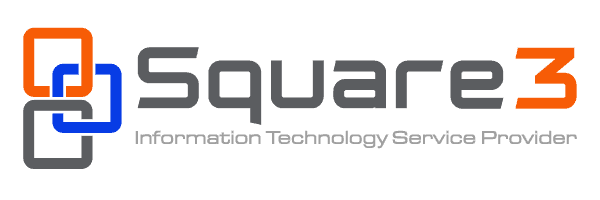5 steps to building an IT roadmap
Today’s business landscape is more competitive than ever. Technology is evolving at rapid rates, and organizations can either adopt and adapt or accept defeat.
“There’s no army big enough to stop this. The new era of IT is marching on.” – Forbes
Business owners and operators in this fast-changing climate often find themselves asking this: how can I leverage technology to meet my short- and long-term goals, all while keeping risks and costs low?
One answer is to create an IT roadmap – sometimes referred to as a technology roadmap.
An IT roadmap communicates to stakeholders how the company’s technology investments will support the overall growth strategy. Roadmapping can be a complex and nuanced process, but the finished product will act as a plan of action for IT teams and managed service providers.
If you have plans to create an IT roadmap for your business, this article is for you. Our guide details the top five questions you should ask when putting together this instrumental document.
Before we get started, let’s take a few moments to define what an IT roadmap actually is.
Defining an IT roadmap
An IT roadmap is a tool that visually illustrates both short- and long-term goals and how present and future technology investments will support these goals.
What benefits do I want out of my IT roadmap?
Before you put pen to paper, it’s worth taking the time to define what, exactly, you want out of your IT roadmap. For many organizations, creating an IT roadmap achieves the following goals:
- Identifies major objectives
- Defines when and how new technology solutions will be implemented
- Gives business executives the information they need to make strategic decisions regarding technology investments
- Gives IT teams a unified sense of where the organization is now and where it is headed
Achieving the above involves answering these critical questions:
- How does the organization currently use technology?
- Are the right technology solutions in place? Do they effectively and efficiently support core operations?
- Are there any additional technology solutions that could be leveraged to improve key growth metrics?
You can keep your IT roadmap focused by zeroing in on one particular task or objective, or broad by charting your higher-level growth strategy. Just be sure to make this distinction before you begin.
What specific tasks do I want my IT roadmap to assist with?
Businesses grow, change, and move. In periods of expansion and transition, stakeholders must re-evaluate how technology is used – it’s an opportunity to make improvements, enhance efficiency, and address any vulnerabilities.
The problem is, 59 percent of small business leaders find it difficult to roll out new technologies. And this hesitation can be detrimental to their bottom line.
Creating a task-specific IT roadmap can help leaders and team members overcome any roadblocks preventing the implementation of new solutions.
If you are planning one of the following tasks, an IT roadmap may be an extremely beneficial support tool:
- Software migration
- System upgrades
- System unification
- Business continuity
- Buying new technologies, whether that be cloud-based or hardware
Who will use my IT roadmap?
IT roadmaps are collaborative. Ensuring your roadmap is comprehensive and usable involves examining it from the perspectives of key stakeholders. These will differ from business to business, but will typically include:
- CEOs
- Third-party stakeholders
- Chief information officers (CIOs)
- Engineers
- IT support teams or IT support providers
- Product managers
- Project teams
“Considering the opportunities and challenges of your industry, thinking through different strategic actions and sharing your ideas with employees can have a positive impact on the company’s growth.” – Forbes
What do I need to include in my roadmap?
Here are a few tips to help you determine what you should include in your roadmap. Just remember, there is no one-size-fits-all formula for creating a successful IT roadmap, so keep your business’s unique needs front-of-mind.
Set measurable goals
When goals are clearly defined, they are 33 percent more likely to be achieved.
Once you have set a goal, you can identify the specific technology solutions that can assist your organization in meeting that goal.
Prioritize
Don’t fall into the trap of writing one big, long, impossible to-do list – or worse, a pie-in-the-sky wish list. Stay connected to your business goals and prioritize the activities that help you take meaningful steps toward those goals.
Listen to the experts
Creating an IT roadmap will help you gain a big-picture perspective on technology. Take this opportunity to listen to the experts, whether that be your in-house or outsourced IT team, suppliers, vendors, or other technology partners.
Budget matters
Your IT roadmap should connect technology solutions to a budget or cost estimation. This can help you further prioritize activities.
Keep it simple
Make it easy for your team to use the IT roadmap. Otherwise, the entire process may have been a waste of time. Keep things simple, and be sure to explicitly answer these questions:
- What technology are we using?
- Why are we using that technology?
- How does that technology tie into our core objectives?
Do I have the resources to take on this task in-house?
Successfully creating a roadmap is easier said than done, and the process demands contextual knowledge and market expertise.
Ask yourself the following:
- Do I understand my industry’s competitive landscape?
- Does my team have past experience in creating an IT roadmap?
- Does my team have the ability to understand technical information and communicate it clearly?
- Is my team aware of the latest IT innovations?
If you answered no to any of the above, it might be worth enlisting the help of an experienced professional. Technology can make or break your company – when the stakes are this high, you need full confidence in your team’s ability.










